Name Charles Demuth | ||
Artwork I Saw the Figure 5 in Gold, Sail: In Two Movements, And the Home of the Brave | ||
Charles demuth
Charles Henry Buckius Demuth (November 8, 1883 – October 23, 1935) was an American watercolorist who turned to oils late in his career, developing a style of painting known as Precisionism.
Contents
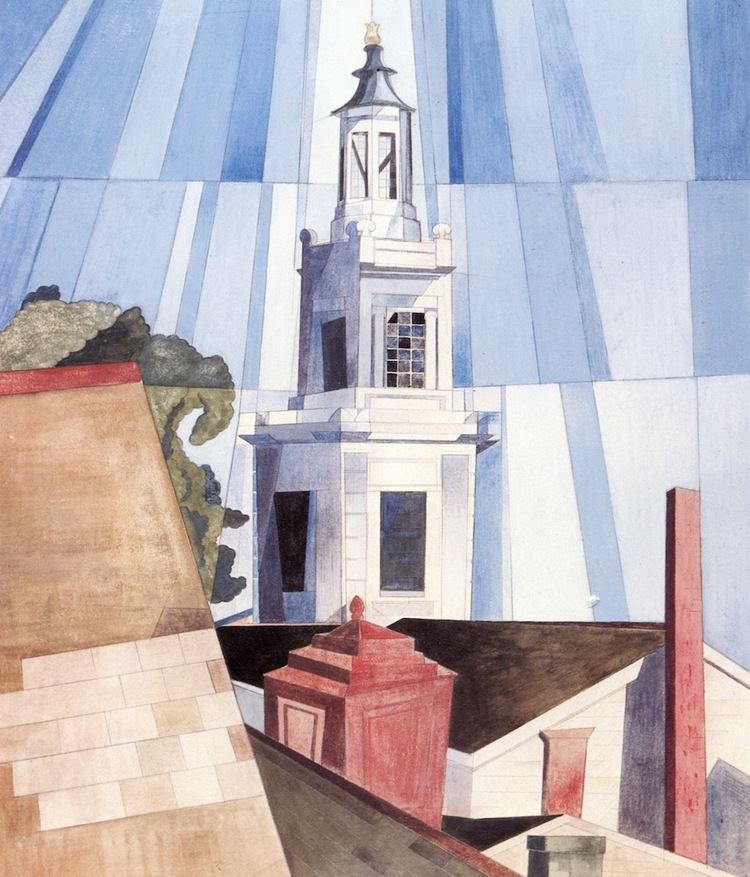
"Search the history of American art," wrote Ken Johnson in The New York Times, "and you will discover few watercolors more beautiful than those of Charles Demuth. Combining exacting botanical observation and loosely Cubist abstraction, his watercolors of flowers, fruit and vegetables have a magical liveliness and an almost shocking sensuousness."
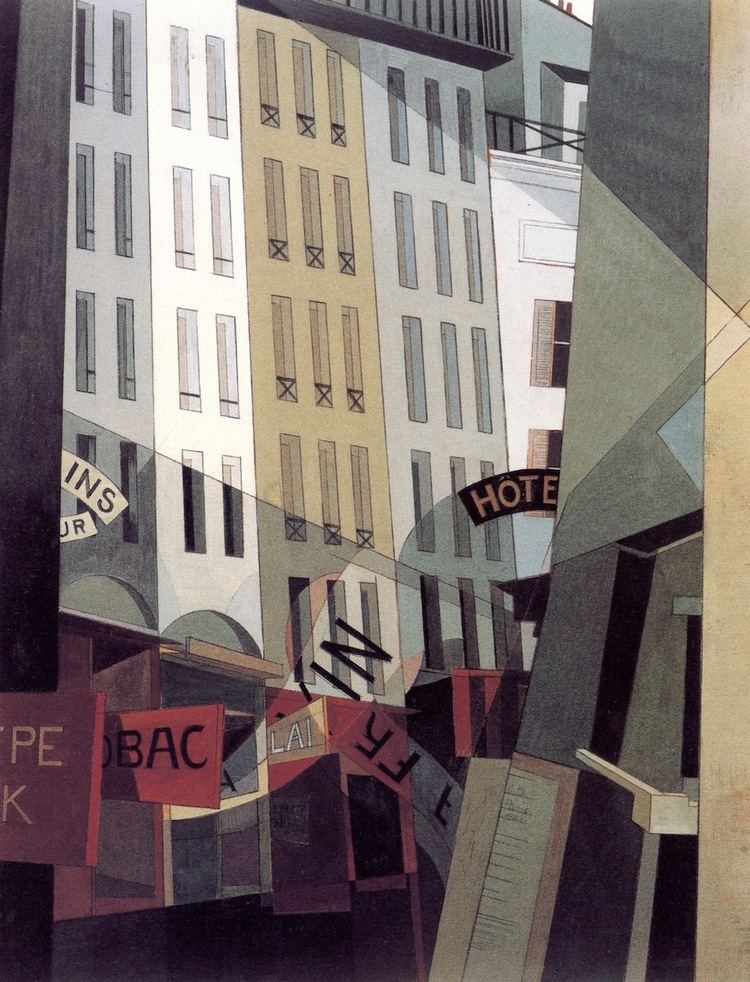
Demuth was a lifelong resident of Lancaster, Pennsylvania. The home he shared with his mother is now the Demuth Museum, which showcases his work. He graduated from Franklin & Marshall Academy before studying at Drexel University and at Philadelphia's Pennsylvania Academy of Fine Arts. While he was a student at PAFA, he met William Carlos Williams at his boarding house. The two were fast friends and remained close for the rest of their lives.
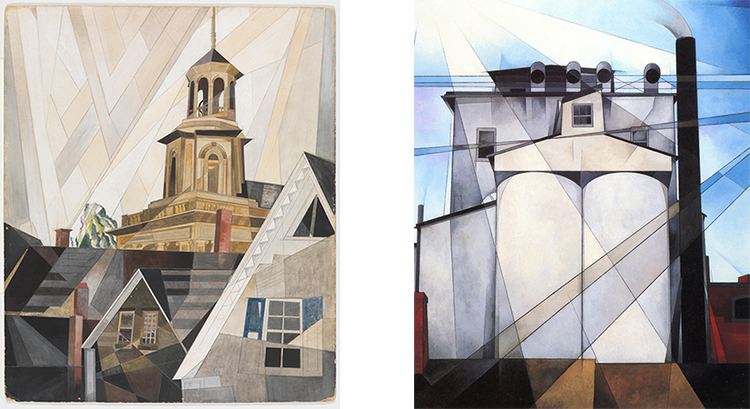
He later studied at Academie Colarossi and Academie Julian in Paris, where he became a part of the avant garde art scene. The Parisian artistic community was accepting of Demuth's homosexuality.
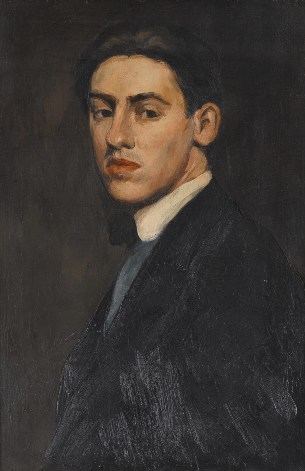
Career

While he was in Paris he met Marsden Hartley by walking up to a table of American artists and asking if he could join them. He had a great sense of humor, rich in double entendres, and they asked him to be a regular member of their group. Through Hartley he met Alfred Stieglitz and became a member of the Stieglitz group. In 1926, he had a one-man show at the Anderson Galleries and another at Intimate Gallery, the New York gallery run by Stieglitz.

His most famous painting, The Figure Five in Gold, was inspired by his friend William Carlos Williams's poem "The Great Figure". Roberta Smith described the work in The New York Times: "Demuth's famous visionary accounting of Williams, I Saw the Figure Five in Gold, [is] a painting whose title and medallion-like arrangement of angled forms were both inspired by a verse the poet wrote after watching a fire engine streak past him on a rainy Manhattan street while waiting for Marsden Hartley, whose studio he was visiting, to answer his door." Describing its importance, Judith H. Dobrzynski in The Wall Street Journal wrote: "It's the best work in a genre Demuth created, the "poster portrait". It's a witty homage to his close friend, the poet William Carlos Williams, and a transliteration into paint of his poem, "The Great Figure". It's a decidedly American work made at a time when U.S. artists were just moving beyond European influences. It's a reference to the intertwined relationships among the arts in the 1920s, a moment of cross-pollination that led to American Modernism. And it anticipates pop art."
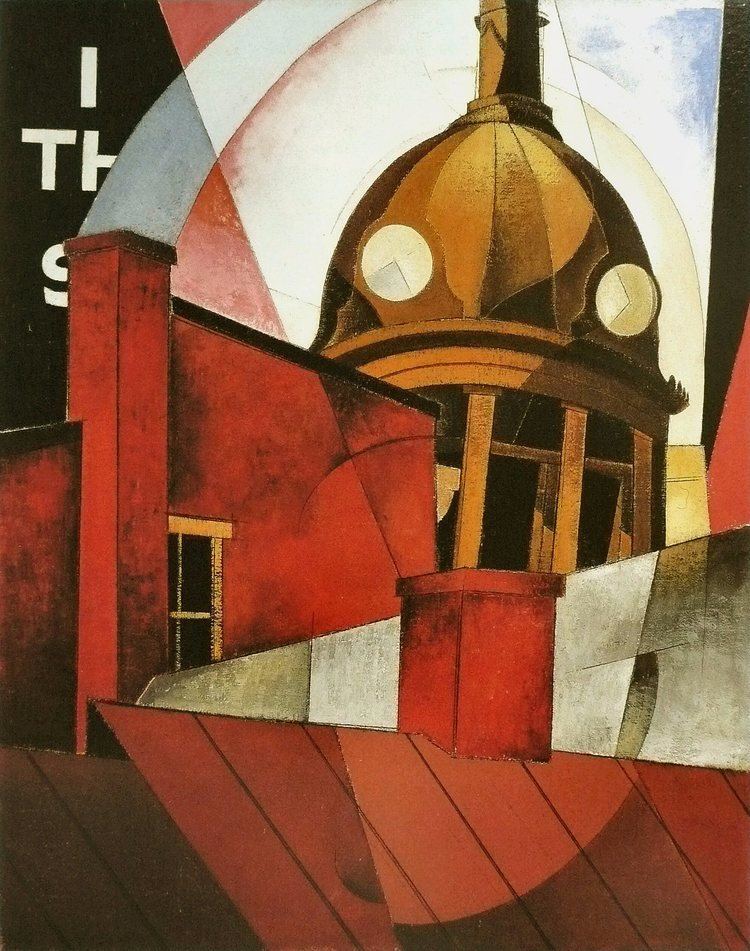
The work is one of nine poster portraits Demuth created to honor his creative friends. The others were devoted to artists Georgia O'Keeffe, Arthur Dove, Charles Duncan, Marsden Hartley, John Marin, and writers Gertrude Stein, Eugene O'Neill, and Wallace Stevens.

In 1927, Demuth started a series of seven panel paintings depicting factory buildings in his hometown. He finished the last of the seven, After All in 1933 and died two years later. Six of those paintings are highlighted in Chimneys and Towers: Charles Demuth’s Late Paintings of Lancaster, a 2007 Amon Carter Museum retrospective of his work, displayed in 2008 at the Whitney Museum of American Art.
According to the exhibit notes from the Amon Carter show, Demuth's will left many of his paintings to Georgia O'Keeffe. Her strategic decisions regarding which museums received these works cemented his reputation as a major painter of the Precisionist school.
Personal life
Demuth suffered either an injury when he was four years old or may have had polio or tuberculosis of the hip that left him with a marked limp and required him to use a cane. He later developed diabetes and was one of the first people in the United States to receive insulin. He spent most of his life in frail health, and he died in Lancaster at the age 51 of complications from diabetes.
Charles used the Lafayette Baths as his favorite haunt. His 1918 homoerotic self-portrait set in a Turkish bathhouse was likely set there.
